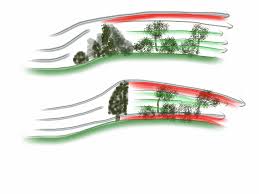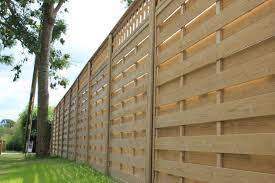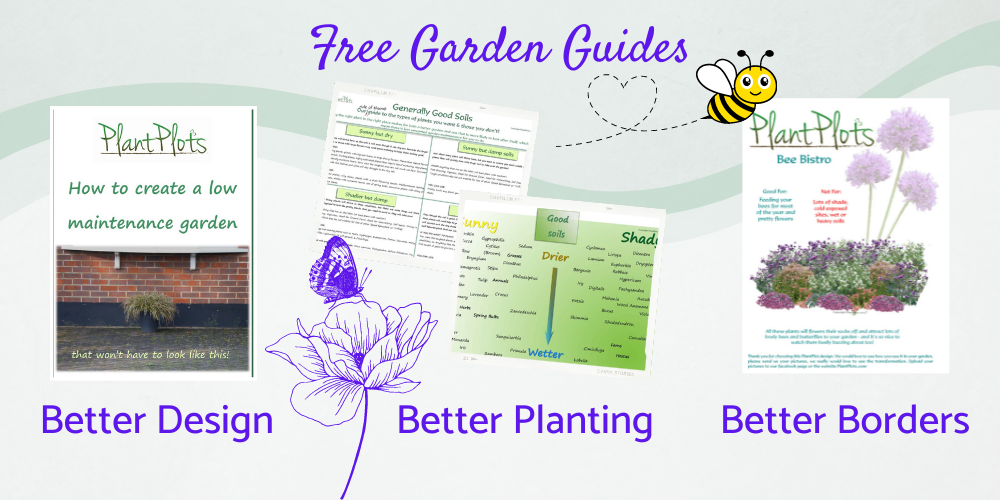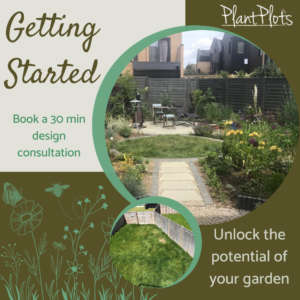
Windy Gardens – how to make them less windy!
Plants are used to growing whatever the weather throws at them, if they wern’t, the world would look like a desert. But in domestic gardens the wind can be more of a problem; we plant unsuitable plants for the environment we have and the buildings and fences themselves alter the airflow creating eddies and turbulence which can flatten your plants.
So, the key to coping with the wind is to find a way to ‘slow the flow’
How to deal with windy gardens? Smaller gardens generally suffer from two types of wind.
- A funneling effect as it speeds up between narrow spaces.
- Turbulence; as the wind is deflected up and over walls or structures.
Here’s the meteorological bit, but the basic principle is this; when wind hits a solid object it goes up and over, but it doesn’t get slowed down much. Secondly if it passes through a narrow gap it gets squashed and flows faster thus creating a wind tunnel effect.
Windbreaks and shelter belts are not designed to stop the flow of the wind; just slow the wind down and disrupt the flow.
NB: The fastest wind is shown red, the ‘broken wind’ green.
Grasses look their best if allowed to jiggle in a breeze!

The top diagram here shows a more traditional shelter belt. Wind is deflected up but is also allowed to pass through the windbreak, dramatically reducing the speed of the air.
Trees diffuse the wind speed, but you need more than one
In the lower diagram, the windbreak effect of a large tree is shown, airflow is reduced, but noticeably not at the base under the branches.


Solid fences don’t slow the wind down – open slatted double sided fences are better
The top image shows a fence that has open horizontal slats on either side of a post, these allow the wind to pass through, more slowly, leaving the faster wind level above the fence line.
If you just have a fence or wall. The wind simply goes up and over and is only ‘calmed’ near the base of the wall, most of the plants still get a bit of a battering.
Create a garden sized shelter belt using a mixture of small trees and shrubs pruned into tall columns. These will slow the wind down, so here’s the physics bit.
For every 1m of height, you get 2m of wind break.
So if your patio is 5m from the fence line, you need 2.5m height at the fence to slow the wind reaching the patio.
Then use the effect of the wind to your advantage, watch it. Add lots of plants that will move with the breeze. You can’t stop the wind, so fill the garden with soft willowy plants that will sway and move. It makes the garden interesting to look at.
A typical garden fence
This is more the normal scenario for most homes, a fence with a shrub behind it. The wind is slowed, but not much, most is merely deflected.
To remedy this problem use a windbreak fence that allows air to flow through. Then add a taller structure to catch the wind flowing over the top.
Horizontal slats are by far the best, not only do they offer good privacy, but they also look nice. However you do need to ensure they are built sturdily and able to withstand the wind.
So fast flow is now slow flow – and your plants will love you for it.
Now clearly we could write a book on garden design that will help you plan even the windiest of gardens better. Amazingly there IS a book to help you.
I Want to Like my Garden by Rachel McCartain available at Amazon and other online bookstores in eBook and Paperback












